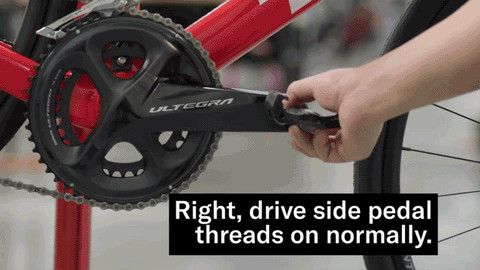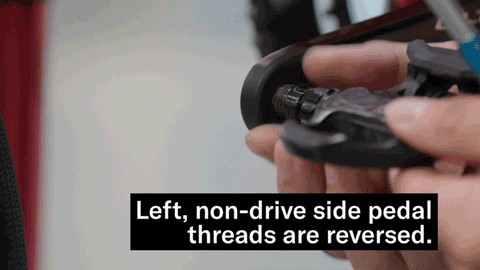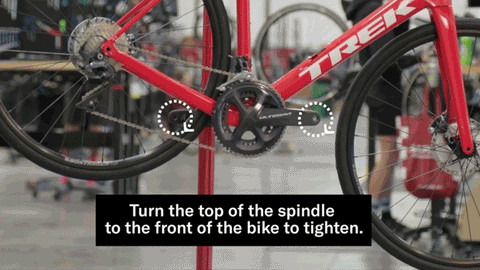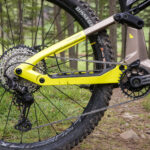Changing your bike pedals is a fundamental skill for any cyclist who wants to perform basic bike maintenance at home. While it might seem straightforward, there are crucial details that, if overlooked, can lead to frustration or even damage to your bike. This guide provides a comprehensive, step-by-step approach to ensure you change your bike pedals correctly and efficiently.
Step 1: Gather the Right Tools for Pedal Installation and Removal
 Tools needed to change bike pedals, including pedal wrench and hex wrenches
Tools needed to change bike pedals, including pedal wrench and hex wrenches
Before you begin, it’s essential to identify the right tool for your specific pedals. Most pedals will require one of the following:
-
Pedal Wrench / 15mm Wrench: Typically used for older or budget-friendly pedals. These wrenches are designed to be thin to fit between the pedal and crank arm effectively. A dedicated pedal wrench is recommended, but a narrow 15mm box wrench or an adjustable crescent wrench can also work. Be cautious when using thin cone wrenches as they can damage the pedal flats.
[product-block handle="park-tool-pw-5-home-mechanic-15-0mm-pedal-wrench"/] -
8mm Hex Wrench: Commonly required for many modern clipless and flat pedals.
-
6mm Hex Wrench: Another standard size for hex wrench fittings on contemporary pedals.
[product-block handle="park-tool-ph-1-2-p-handle-hex-set-with-holder-1"/]
Shop Tools
Inspect your pedals closely to determine whether you need a wrench for the pedal spindle flats or a hex wrench for the spindle end. Having the correct tool will make the process much smoother and prevent any damage.
Step 2: Understand Pedal Thread Direction: Right vs. Left Pedals
Understanding pedal thread direction is crucial because bike pedals have different threading on each side to prevent loosening while pedaling.
 Right bike pedal installation showing clockwise tightening direction
Right bike pedal installation showing clockwise tightening direction
 Left bike pedal installation showing counter-clockwise tightening direction
Left bike pedal installation showing counter-clockwise tightening direction
- Right Pedal (Drive Side): Features a standard thread. Turn clockwise to tighten and counter-clockwise to loosen.
- Left Pedal (Non-Drive Side): Has a reverse thread. Turn counter-clockwise to tighten and clockwise to loosen.
This difference in threading is designed so that the natural rotation of pedaling tightens both pedals over time. Remembering this difference is key to avoiding stripped threads or struggling unnecessarily.
A helpful way to remember the direction is:
 Visual aid to remember pedal installation direction, turning towards the front of the bike to install
Visual aid to remember pedal installation direction, turning towards the front of the bike to install
- Install: Rotate the top of the pedal spindle towards the front wheel of the bike to tighten.
- Remove: Rotate the top of the pedal spindle towards the rear wheel of the bike to loosen.
Most pedals are marked with “R” for right and “L” for left, usually found on the spindle end. If markings are unclear, examine the threads closely to determine the tightening direction before you start.
[newsletter]
Step 2.5: Apply Grease to Pedal Threads Before Installation
 Applying grease to bike pedal threads before installation
Applying grease to bike pedal threads before installation
Applying grease to the pedal threads might seem like a minor step, but it’s crucial for long-term bike maintenance. Grease prevents corrosion and seizing, making pedal removal significantly easier in the future.
Before installing any pedals, new or used, apply a small amount of grease to the threads of the pedal spindle. If using used pedals, wipe the threads clean before greasing. A thin layer of grease is sufficient; you don’t need to overdo it.
While bike-specific grease is ideal, any waterproof grease or anti-seize compound from a hardware or auto parts store will work effectively. In an emergency, even a small amount of Vaseline can suffice, but it’s best to use proper grease as soon as possible. Installing pedals without grease can lead to them becoming stuck and extremely difficult to remove later.
Step 3: Properly Tighten Your Bike Pedals
Bike pedals don’t require excessive force when tightening. In fact, the motion of pedaling while riding naturally helps to keep them tightened. The recommended torque for pedals is approximately 360 inch-pounds, which is about 40.5 Newton meters.
However, many experienced mechanics tighten pedals effectively without a torque wrench. The common technique is to hand-tighten the pedal until the spindle meets the crank arm, and then use a pedal wrench or hex wrench to give it a final firm snug turn, about a quarter to half turn past hand tight. This method provides sufficient tightness to prevent loosening during rides without making future removal difficult.
Important Tip: Preventing Cross-Threading of Bike Pedals
Cross-threading is a common pitfall when changing bike pedals and can lead to damaged crank arm threads and potentially dangerous situations while riding. Cross-threading occurs when the pedal threads are not aligned correctly with the crank arm threads during installation.
To prevent cross-threading:
- Start Straight: Ensure the pedal is started straight into the crank arm. Misalignment is the primary cause of cross-threading.
- Thread by Hand First: Begin threading the pedal in by hand. It should turn easily and smoothly with minimal resistance.
- Stop if Resistance is Felt: If you encounter resistance or the pedal feels tight or jammed, stop immediately. Forcing it will damage the threads.
- Re-align and Re-grease: Remove the pedal, inspect the threads for damage, and re-apply grease. Try starting again, ensuring correct alignment. If necessary, clean the threads in the crank arm as well.
By being careful and attentive during installation, you can avoid cross-threading and ensure your pedals are safely and correctly installed, providing a secure and enjoyable ride.
Shop Pedals

